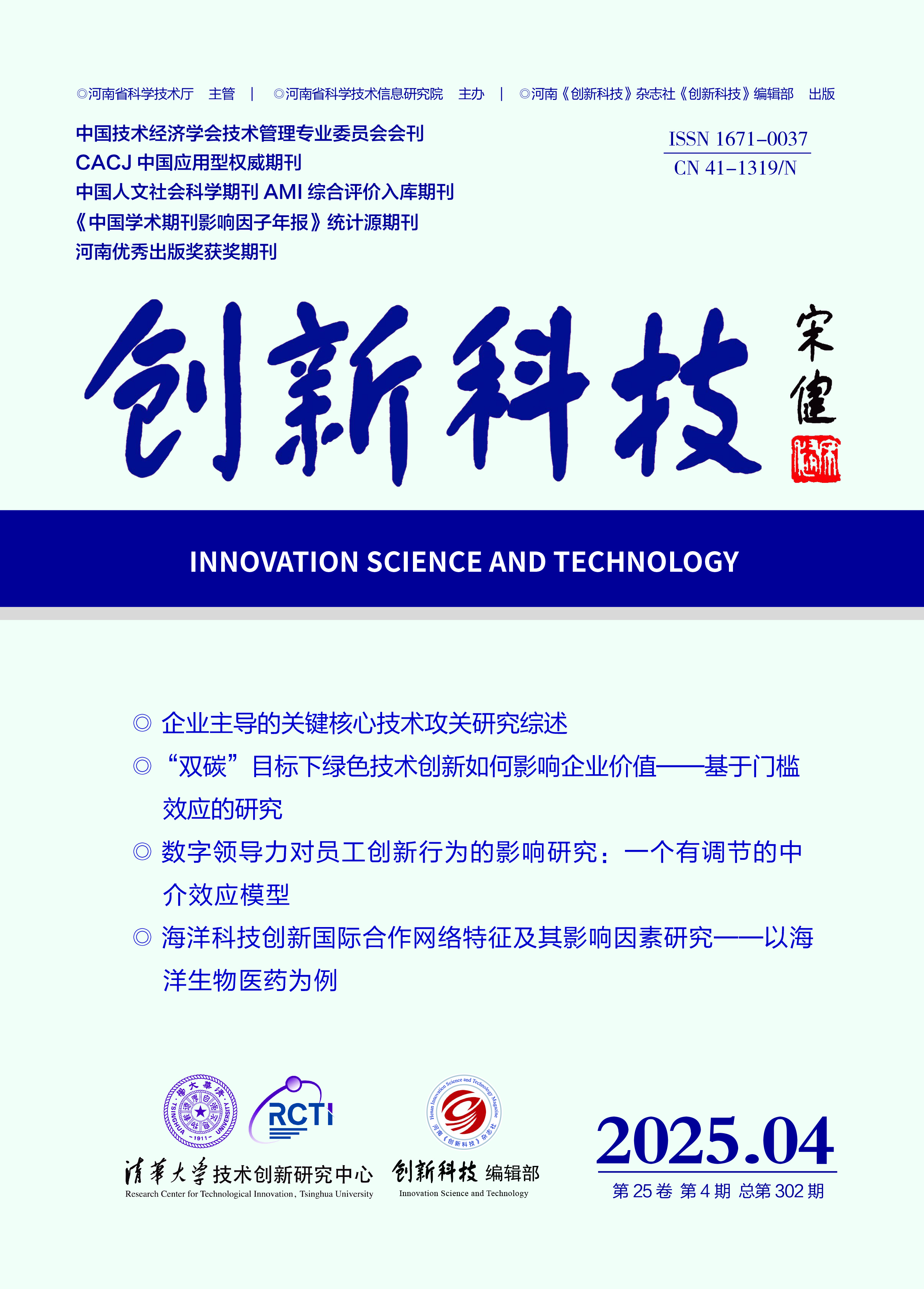INNOVATION SCIENCE AND TECHNOLOGY
Quick Search

All publication are peer-review
Peer review will take the from of double-blind review Judge objectively and impartially
There is no conflict of interest for the reviewer
Review articles shall be kept strictly confidential prior to publication
Research on Science & Technology Talents
Research on the Growth Characteristics and Mobility Patterns of Artificial Intelligence Scientists Based on Resume Information
Shao Peng1 , Qiu Xiaojie1 , Huang Pengfei1,2
(1.School of Management, Xi'an Polytechnic University, Xi'an 710048, China; 2.Faculty Development College, Shaanxi Normal University, Xi'an 710062, China)
Abstract: The report to the 20th National Congress of the Communist Party of China states that it is necessary to "accelerate the development of national strategic talent resources and strive to cultivate more masters and strategic scientists". Currently, a new round of technological revolution, represented by artificial intelligence, is driving profound changes in production, life, and governance. Accelerating the application of artificial intelligence, fostering the growth of the AI industry, and expanding the talent supply have become important pillars of China's economic development. Although China has established a relatively comprehensive policy support system for artificial intelligence and related industries that have developed rapidly, several challenges remain. These include a lack of foundational talent reserve, imbalanced talent structures in lead⁃ ership, and an insufficient supply of technical professionals, all of which hinder the development of the industry. The "New Generation Artificial Intelligence Development Plan", issued by the State Council, explicitly states that building a high-level talent team is a top priority for the de⁃ velopment of artificial intelligence. The rapid development of artificial intelligence relies on the continuous exploration and in⁃ novation by scientists, who are the drivers of technological progress and the predictors of applica⁃ tion trends. The growth of talent in science and technology includes not only the development of intellectual, psychological, and physical potential but also the improvement of research capabili⁃ ties and the advancement of related fields. Studying the growth stages of AI scientists helps clarify the characteristics and challenges involved in talent development, providing theoretical support for talent cultivation in the field of artificial intelligence. The flow of scientific and tech⁃ nological talent refers to changes in the service units or targets of this talent, including mobility in education, employment, and jobs. As global competition in artificial intelligence intensifies, is⁃ sues related to talent cultivation, recruitment, and mobility have become crucial for economic and social development. Therefore, understanding and following the growth characteristics and mobility patterns of AI talent has become an urgent priority for research and policy formulation in this field. This study focuses on the growth characteristics and mobility patterns of artificial intelli⁃ gence scientists, employing methods such as career analysis, social network analysis, and San⁃ key diagrams. First, AI scientists are defined as fellows of the Chinese Association for Artificial Intelligence and the Chinese Association of Automation. The study collects career information from 231 AI scientists, analyzing their growth characteristics from aspects such as educational background, overseas study experience, academician status, and the nature of their affiliated in⁃ stitutions. Second, the study constructs learning mobility networks, employment mobility net⁃ works, and work mobility networks to analyze the mobility network characteristics of AI scien⁃ tists from both the overall and individual network perspectives. Finally, Sankey diagrams are used to visualize the mobility of AI scientists between regions, specifically between the eastern and western parts of China. This visualization aims to analyze talent flow characteristics across different regions and compare the mobility patterns of AI scientists between these regions. The aim of this study is to support the optimization of AI talent cultivation and promote the rational mobility of talent through relevant policies.
Key words: artificial intelligence; talent mobility; social network; resume analysis; growth characteristics; mobility patterns